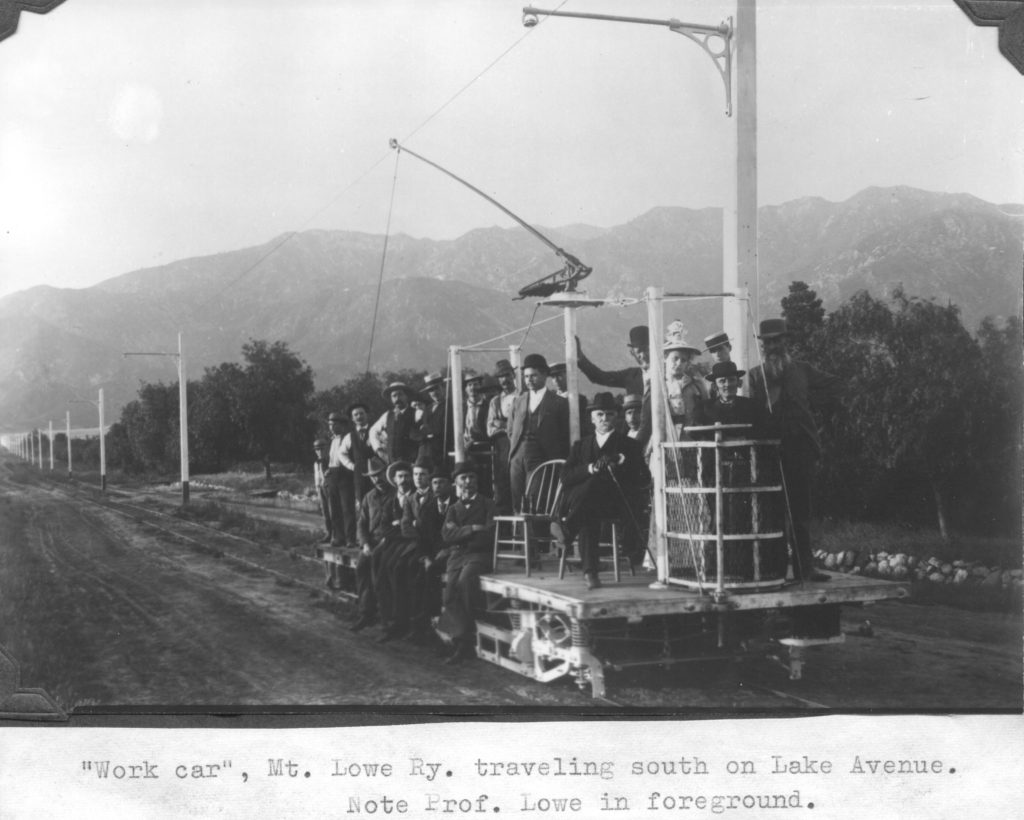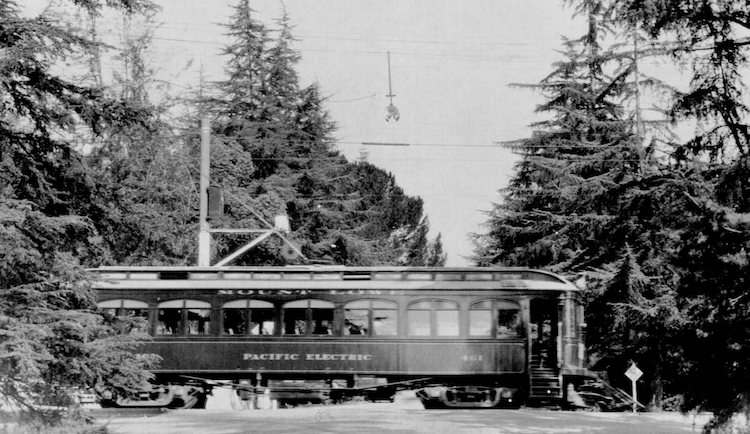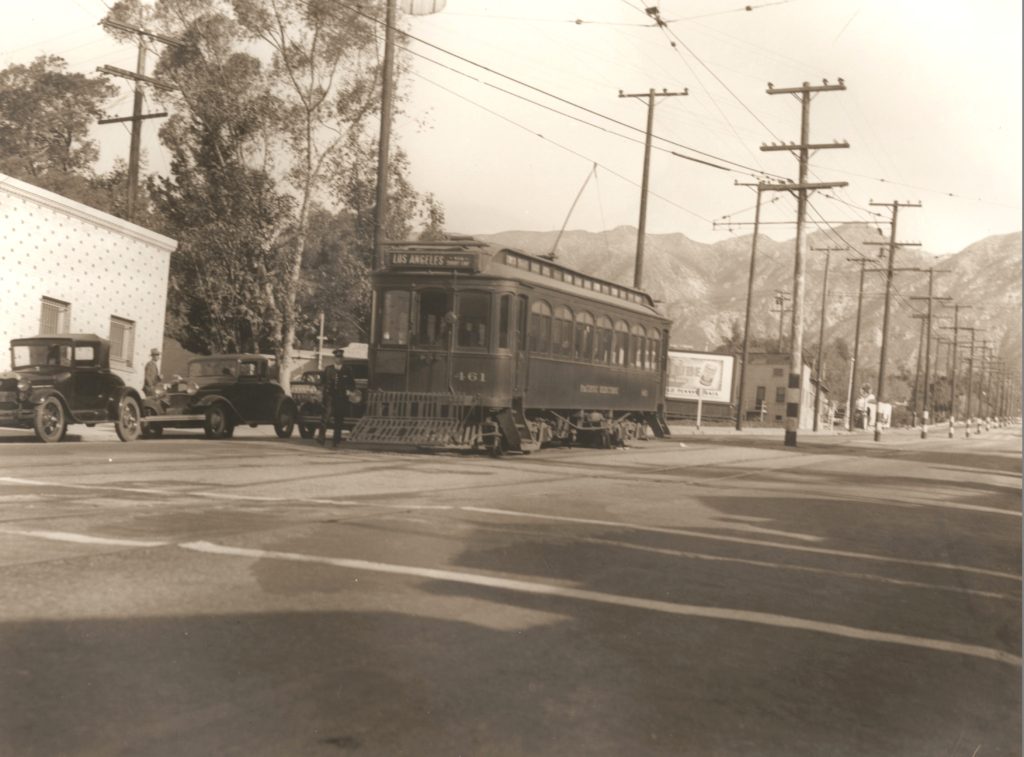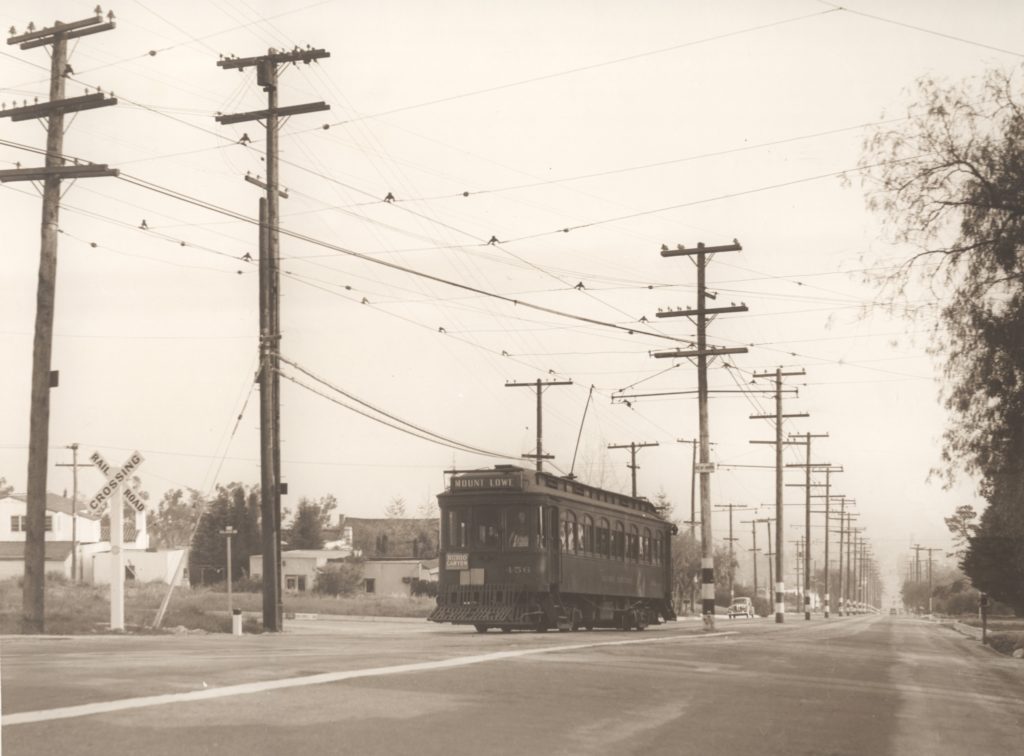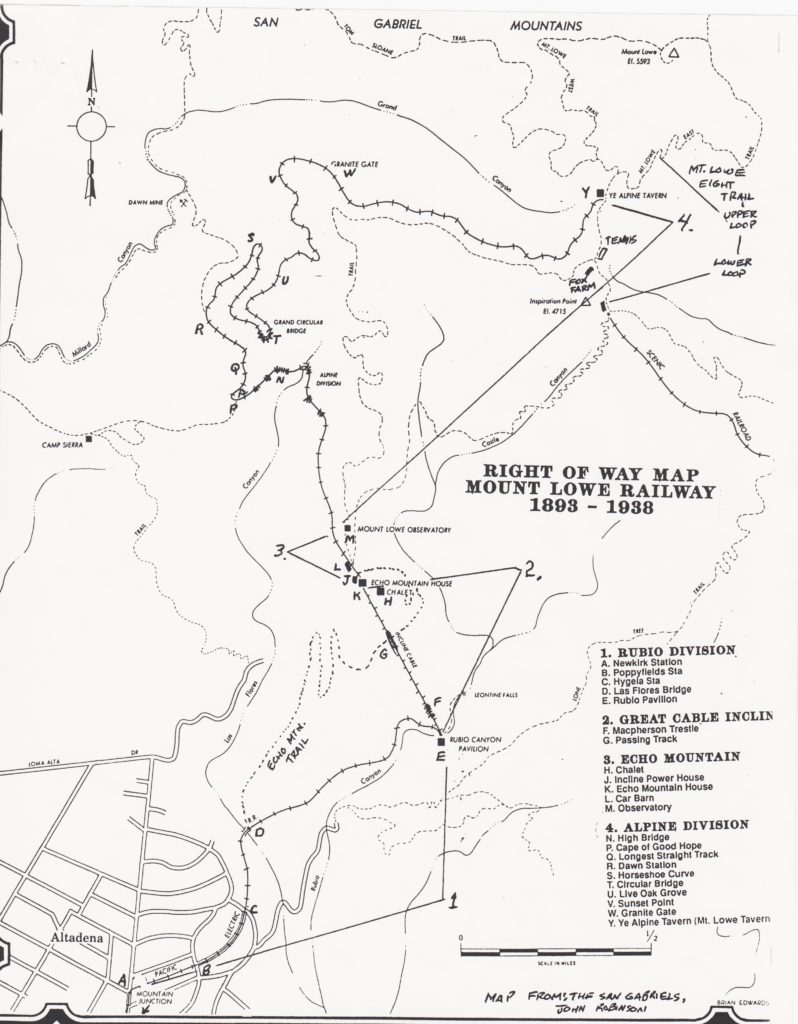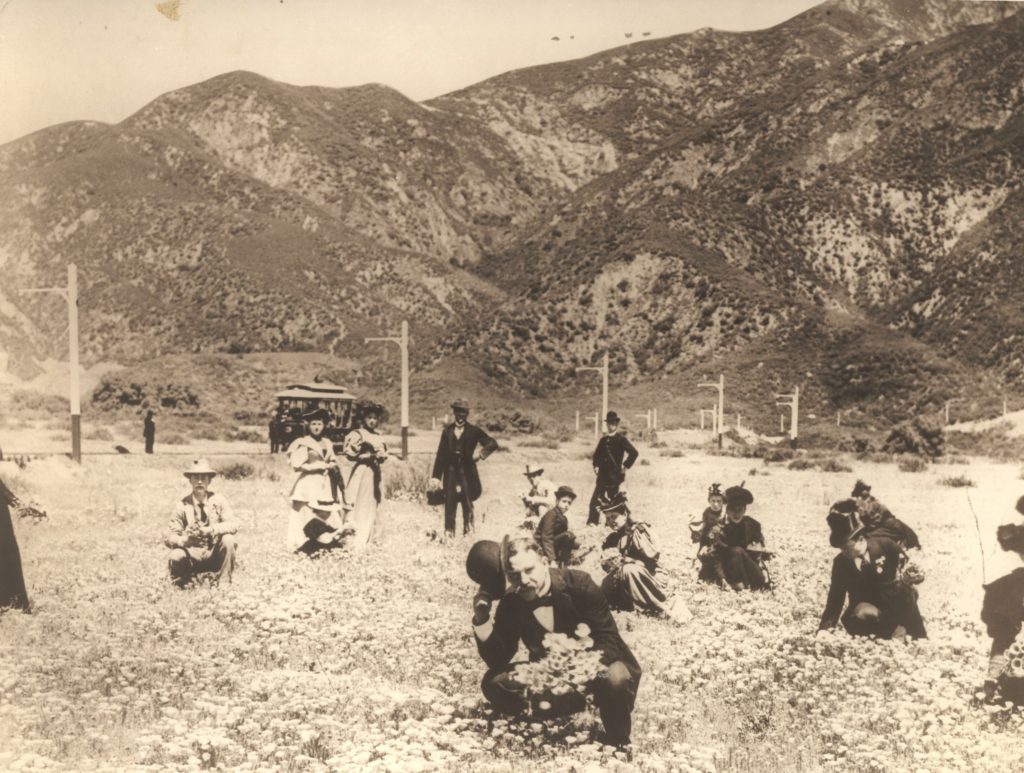Construction
The route to the Rubio Pavilion and the Great Incline began at Altadena Junction. The single track line would extend straight up Lake Street for three quarters of a mile, then curve to the Rubio Canyon mouth, above and to the northeast about another three quarters of a mile. With some dynamite for the toughest canyon walls, and a lot of physical labor, the first leg of the railway was completed to the mouth of the canyon by September in 1892.
The final mile through the canyon to the platform and Incline would prove the hardest, with bridges needing to be built and more blasting of the canyon walls. Nine bridges were needed to get to the pavilion location and this labor-intensive and costly work began to drain the professor’s finances. While the nine bridges were being built, all construction supplies to build the Incline were hauled in by burro. By January of 1893, track was laid all the way to the Incline platform and supplies finally flowed easily to support the planned construction of the 60-degree cable system.
The Route
The trolleys went directly up Lake Avenue to Newkirk Station, which was located just above where Dolores Street meets Lake Avenue. The rails now turned eastward towards Rubio Canyon, stopping at the Poppyfields Station near the current intersection of Mt. Lowe Drive and Maiden Lane. It was here that many passengers stopped to get out and pick wild poppies from the hillside – the same hillsides that Juan Cabrillo had seen from his ship passing Santa Monica Bay centuries earlier and proclaimed them “sabanilla del oro” or the altar cloth of gold. The last stop before entering Rubio Canyon was Hygiea named after the Greek daughter of the god of medicine, where a sanitarium for consumptives (people with tuberculosis) was located.
The route to Rubio Canyon was modified after the Pacific Electric Company assumed ownership of the tourist attraction and needed to link the track to their red car route. Instead of riding up Lake Avenue from Calaveras, the P&E red cars came over Mariposa from Fair Oaks then turned north onto Lake Avenue and continued along the original route.
